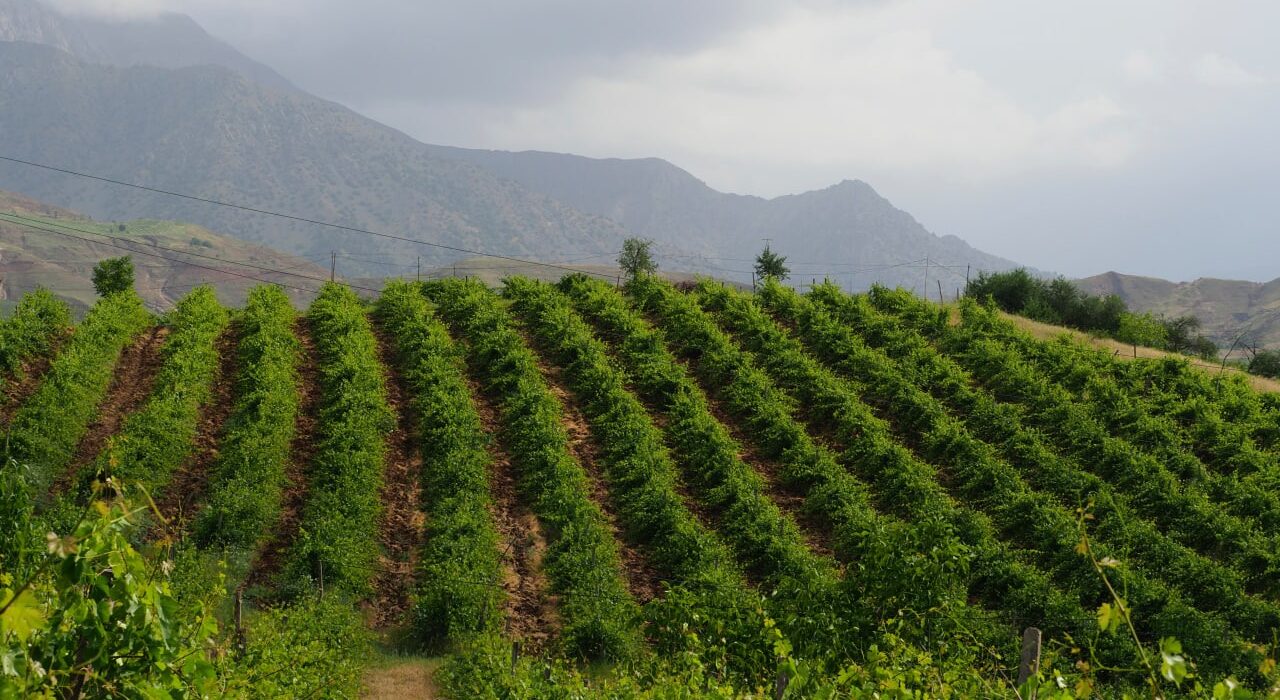In July 2025, the Almosi Valley in the foothills of Hissar in Tajikistan made history: the Food and Agriculture Organization of the United Nations (FAO) officially recognized it as part of the Globally Important Agricultural Heritage Systems (GIAHS) network. This marks the first GIAHS designation among all countries of the Commonwealth of Independent States.
We spoke with Ibrohim Ahmadov, FAO’s National Project Coordinator in Tajikistan, to understand what makes Almosi so unique and how this prestigious recognition was achieved.
Q: What makes Almosi a unique agro-system?
A: The Almosi Valley is a distinctive mountain agro-pastoral system, where diverse agricultural practices are seamlessly integrated to ensure effective management of both natural and productive resources. Shaped through centuries of adaptation to complex mountainous conditions, Almosi’s resilience lies in its rich landscape and sustainable land-use traditions. This symbiotic relationship between nature and communities has preserved globally significant biodiversity and offers a model for sustainable rural development based on the balance between conservation goals and socio-economic needs.
The valley produces a wide range of agricultural products known for their unique qualities and market demand — locally, nationally, and internationally. The system combines viticulture, animal husbandry, cereal cultivation, and oilseed farming, all within an ecologically sustainable cycle.
Almosi’s hallmarks include:
Pink Taifi (Hissori) grape — thriving on dry slopes and recognized for its rich color, aroma, and flavor, thanks to a unique microclimate shaped by glacier winds and mountain sun. Its quality surpasses similar varieties in Uzbekistan, Kazakhstan, the Caucasus, and other regions.
Hissar sheep — a result of traditional selective breeding. Known for their large size, high meat and fat yields, and rapid growth, this breed ranks among the world’s top meat sheep.
Q: What is GIAHS?
A: FAO’s GIAHS program aims to identify and safeguard unique traditional agricultural systems that integrate:
High biodiversity,
Sustainable ecosystems,
Deep-rooted cultural traditions.
These systems, based on local knowledge, play a vital role in food security, sustainable rural development, and cultural preservation. The program involves local communities, national authorities, and global partners.
FAO promotes GIAHS to protect unique agricultural practices worldwide. The value of local wisdom, biodiversity, and heritage is central.
The idea of nominating a Tajik site to GIAHS was first discussed between the Ministry of Foreign Affairs of Tajikistan and FAO in 2019. In 2023, three potential candidates were assessed: rice farming in Tursunzade, fish farming in Karatag, and Almosi’s agro-pastoral system. Almosi was selected for its excellence across GIAHS criteria: resilience, agrobiodiversity, traditional knowledge, cultural values, and landscape uniqueness. On July 7, 2025, Almosi officially received the GIAHS designation.
Q: What opportunities does this open?
A: The GIAHS status unlocks potential for both Almosi’s local community and Tajikistan’s broader agricultural sector. For the first time, the following have been formally acknowledged as intangible cultural and agricultural heritage:
Taifi Hissori grape and Hissar sheep breed,
Local varieties of grapes, apples, wheat, barley, cherries, and more,
Indigenous livestock breeds like the Sagi Dakhmarda shepherd dog,
Traditional transhumance and farming knowledge,
Folk calendars, customs, cuisine, rituals, and festivals,
Regional agro- and biodiversity.
This enhances Tajikistan’s image as a country rich in agricultural and cultural heritage.
Residents of Almosi Valley gain access to:
Protection of natural and cultural resources,
Growth of agro- and eco-tourism,
Participation in international rural development projects,
Attraction of investment and new income opportunities.
The GIAHS status paves the way to increased funding from entities like FAO, IFAD, GEF, and others, and helps advance green and climate-resilient development principles.
Thus, the GIAHS status highlights Almosi Valley’s historic and ecological importance and becomes a powerful tool for sustainability, biodiversity conservation, and better livelihoods.
As of mid-2025, the GIAHS network includes 99 officially recognized sites across 29 countries. Almosi is the 99th and first in Central Asia.
This success reflects coordinated efforts between government, communities, researchers, and international partners. FAO’s recognition is the result of joint contributions from all sides committed to preserving tradition and driving sustainable growth. GIAHS isn’t just a tribute to the past — it’s a launch pad for food security, agro-tourism, investment, and global inclusion.
by Shoira Toirova
